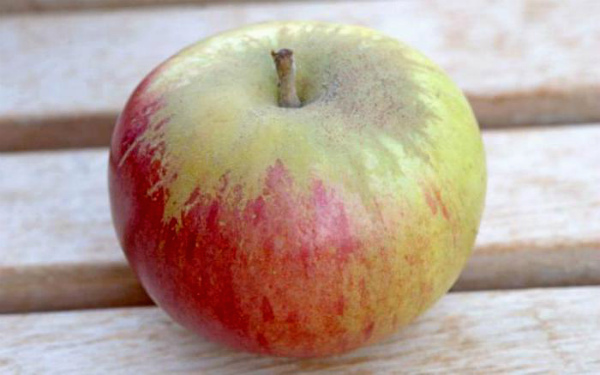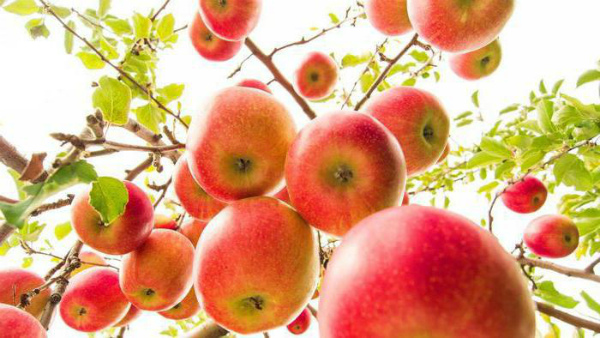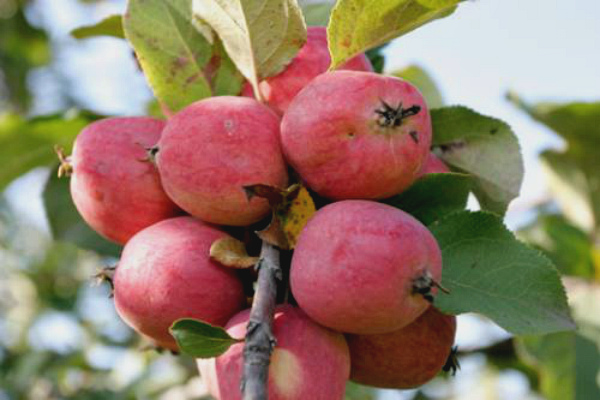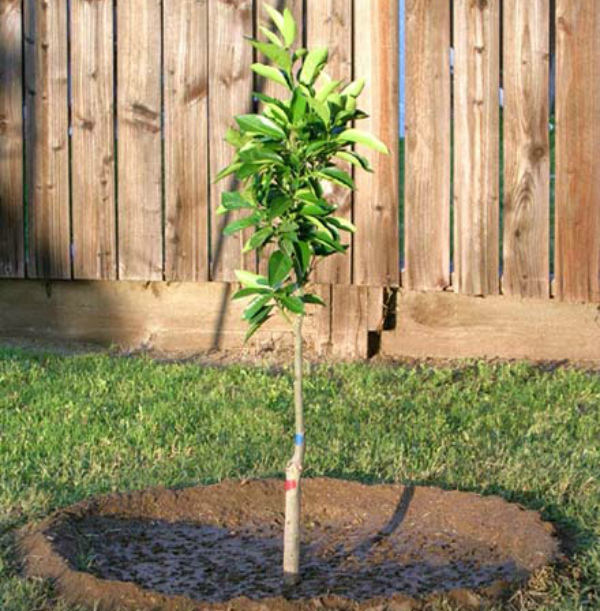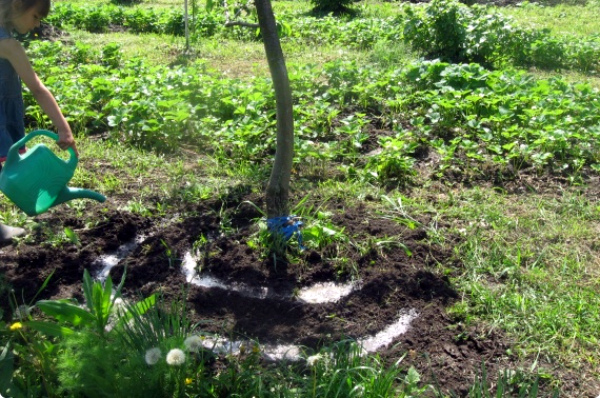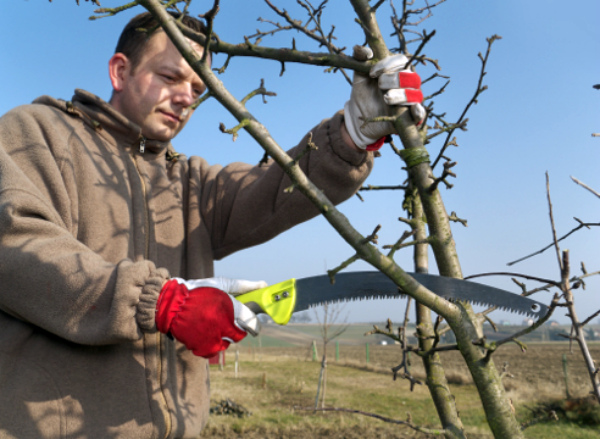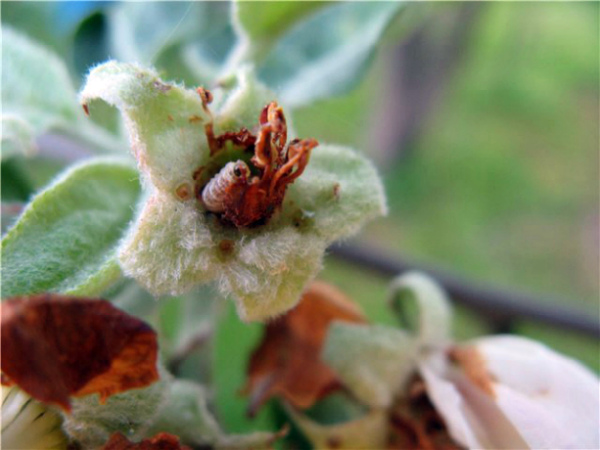All about the apple variety Pepin saffron
Content
Description and characteristics of the variety
Trees «Pepin saffron "do not grow too high - usually a seedling with a round crown grows into a three-meter spreading apple tree with drooping branches that can bend to the ground under the weight of the fruit. The bark on young shoots is green, with age it becomes gray, the leaves are elongated, pubescent, green-gray, the stalks are long and thin. Fruiting begins from the 5th or 6th year, if the variety is grafted onto a dwarf stock, then from the 4th year of life. Young trees up to 10 years of age yield an average of 80 kg of apples, and after 10 years - from 190 to 220 kg.
"Pepin saffron" was bred as a winter-hardy variety, but young trees need to be covered for the winter. If an adult tree suffers from frost, then this will not become critical, it will survive the injury without consequences.
With proper care, the apple tree gives a bountiful harvest every year, and violations of care are fraught with crushing of the fruit.
The description of the variety usually indicates its self-pollination, but many gardeners plant nearby Antonovka, Slavyanka, Welsey. They say that in their presence "Pepin Saffron" increases the yield.
Apple trees of this variety are considered winter. The fruits are harvested at the very end of September (or October, if the climate permits), and the peak of consumer ripeness comes closer to the new year. You can enjoy apples since August - then they are yellowish-green, hard and juicy, the taste is more sour with sweetness than vice versa. In September, apples are filled with a bright saffron blush, the taste begins to correspond to the description of the variety - it becomes sweet with sourness.
A spicy wine aroma is slightly felt around the tree. Plucked apples smell much stronger. Ripe fruits have a round-cone-shaped shape, some of them implicitly show the edges, through the thin but strong skin dots shine through. Their flesh is fine-grained, creamy. The fruits are medium in size, their weight varies from 80 to 140 grams. The size of apples is influenced by the density of the crown, so it has to be thinned out annually.
In order for the apples to last until spring, they are picked a little earlier than ripeness, completely undamaged specimens are selected and stacked in wooden boxes in layers, shifting them with sawdust or paper. It is advisable to take boxes and sawdust not from coniferous trees, otherwise the apples will change their natural aroma. Containers with fruits are kept in a cool room with a temperature of +1 to +3 degrees.
The description of "Pepin Saffron" draws attention to the fact that apple trees are susceptible to fungal diseases and scab, but proper care will help to cope with this. You can regularly carry out prevention so that you do not have to deal with treatment.
Growing features
«Pepin saffron "does not like acidic soils, prefers leached chernozem, light, but nutritious loamy or sandy loam soils. Apple trees of this variety should not be planted in lowlands and places where there can be stagnant water, where underground waters come close to the surface, good drainage is important for them.It is best to choose an elevated, open area that is well-ventilated by air currents.
The place for the apple tree must be immediately chosen permanent. Painfully does not like "Pepin saffron" transplants.
Apple trees can be planted in autumn and spring, but many gardeners prefer spring planting, because before winter the tree will have time to get even a little stronger, and during autumn planting it will need to be specially prepared for wintering. Be that as it may, for the autumn planting, the site is prepared from the beginning of August: compost, superphosphate and potassium salt are distributed on the site, then they dig it up.
If they plan to plant a tree in the spring, then in the fall they dig a hole with a diameter of at least 1.3 meters and a depth of 80 cm, half-rotted manure, azophoska and wood ash are added to the ground. Manure can be replaced with ready-made compost. All this mixture is again poured into the pit, covered with something from above from the precipitation, and left like this until spring.
Saplings "Pepin's saffron" for planting is better to take at the age of one or two years, it is desirable to buy in nurseries or specialized stores. Before buying them, you need to carefully examine them, you do not need to buy copies with the slightest damage or growths. The wood of a healthy seedling should be green, and the root moist, and the grafting site should be clearly visible.
Before planting, the roots of the apple tree are soaked in water for 4 hours, and just before sinking into the ground, they are dipped in a clay chatterbox. A hole with a diameter of 80 centimeters and a depth of 70 centimeters is dug in a previously prepared place, 2 strong pegs are driven in on the sides, and a little loose earth is poured in the middle (which was previously taken out of the hole). Lowering the seedling into the hole, carefully spread the roots, carefully cover them with earth, then trample the ground around. When properly planted, the root collar should rise 5 or even 7 centimeters above the ground. After that, the tree is leveled, tied to pegs, and a hole is made around it, into which water is poured, at least 30 liters under one tree.
After planting, a young tree is watered every week with 10 liters of water, sometimes this watering is divided into two parts: watered in the morning and in the evening. An adult tree is watered as needed, usually a couple of times a month, of course, if it rains. It is best to check the moisture content of the earth - you need to take a handful of earth and squeeze: if it crumbles after compression, then watering is necessary. The last two summer months are especially carefully watered - this is the time for the formation of fruit buds of the next year and the pouring of the fruits of the current year. And towards the end of August, watering is stopped altogether. After the tree sheds all the leaves, it is moistened for the winter - watered so that the earth gets wet to a depth of a meter, this will help the roots to overwinter.
"Pepin saffron" loves nutritious soil. One tree needs an area of 15 square meters for good nutrition, and with abundant fruiting, it chooses many substances it needs, so they need to be replenished if we want to get rich harvests on a regular basis. Trees need organic and potassium-phosphorus fertilizers, which are applied after 2 or 3 years. After the trees have bloomed, they are watered with fifteen times diluted bird droppings, and in September rotted manure or compost is laid in the tree trunk circle. If the ovaries crumble, then the tree is watered with slurry, three times diluted with water.
This variety is very picky about annual crown pruning. It is done in the spring before bud break. In the first year after planting, all branches should be shortened by two-thirds, and the central conductor should be cut by 2 buds. Then, for the next few years, formative pruning is done - they designate skeletal branches, remove all branches that are 90 and even 45 degrees from the trunk, thin out, remove damaged shoots.
And then they produce rejuvenating and sanitary pruning, be sure to remove the branches that are trying to grow vertically inside the crown. In adult trees, the crown and skeletal branches are shortened. If you let the crown grow, the branches will shade each other, this will certainly affect the harvest - the already medium-sized apples will generally turn into trifles, the harvests will not be annual.
Although this variety is considered frost-resistant, young trees must be protected from frost. To do this, the twigs after the foliage has fallen are collected in a bundle, tied with paper or some special covering material, the earth around the trunk is mulched to a height of 10 cm with peat, manure or just earth. Mature trees are not wrapped like this, but when severe frosts hit, it is better to wrap the stem with covering material. For trees over 5 years old, it is recommended to whitewash the trunk with a garden emulsion with lime for the winter.
In winter, apple trees are afraid not only of frost, but also hungry hares and small rodents hibernating nearby. From hares, the trunks are wrapped with a garden net or just spruce branches. And rodents are scared away with special devices or traps are placed between trees.
Video "Planting an apple tree seedling"
In this video, you will learn an effective way to plant an apple tree seedling with 100% survival rate.
Diseases and pests
Unfortunately, in a rainy summer or when the crown of an apple tree is thickened, they often suffer from scab. Proper care will help protect the trees - strong trees, in which fresh air penetrates deep into the crown, will be able to withstand this trouble.
Apple blossom beetle, comma-shaped scale insect, moth - all of them can threaten the apple orchard. Preventive measures may include meeting normal sanitary requirements. It is necessary to remove fallen leaves, dig up the ground under the trees, make sure that there are no wounds on the branches and trunks. If any appear, they urgently need to be treated with garden varnish. It is necessary to remove damaged or infected leaves and branches in a timely manner, to prevent the decomposition of volunteers.
If, nevertheless, pests have settled on trees, they use special means: Karbofos, Nitrafen, Methadion and others. The most important thing is to carefully study the instructions, pay attention to the time of application of the drugs.
Of course, you need to work hard to get rich harvests of such delicious aromatic and amazingly beautiful apples every year. But caring for them does not require too much time and effort, and the reward will be fruits overflowing with vitamins and other useful elements that can protect the family from many diseases from autumn to spring.
Video "How to deal with scab on an apple tree"
In this video, an expert will tell you about apple scab and methods of dealing with it.

